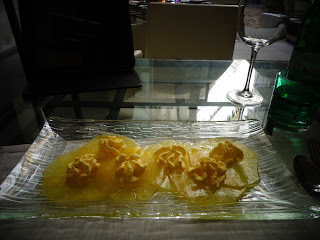| ERICE - Welcome to la citta - beautiful archways and a town of narrow cobblestone streets. Erice is surrounded by Elymian Punic walls laid out by the Eymians around 1200 B.C.!!!!! It is a lovely place to spend a day taking in the incomparable views. On a clear day they say you can see west to the Egadi Islands, east to Mt Etna and south to Africa glimpsing towards Tunsia. The cool cloud that descends on the city is known as the "Veil of Venus" because Erice's highest point, the Castello di Venere ( Castle of Venus) is where the temple of the Roman goddess of love once stood and seeing the city's towers and craggy rocks shrouded in a hazy blanket of gray is quite magical. | THE WORLDS OLDEST PROFESSION, SANCTIFIED -Besides conquering the world, the Romans were known for all sorts of debaucheries. As they worshiped the goddess Venus from the temple, Romans flocked to the temple to offer young girls as holy slaves to the temple in gratitude of fulfilled vows. Barely pubescent, these girls underwent boot camp in the art of all things physically pleasurable. When their stances of holy slaves ended at the ripe age of 21, their careers and reputations where far from tarnished. Not only did they retire with a princely sum of money, they were the most desired bachelorettes in town. And like Venus they were not stick thin: A diet of milk and honey added to their voluptuous allure. | |
| |
|

























































